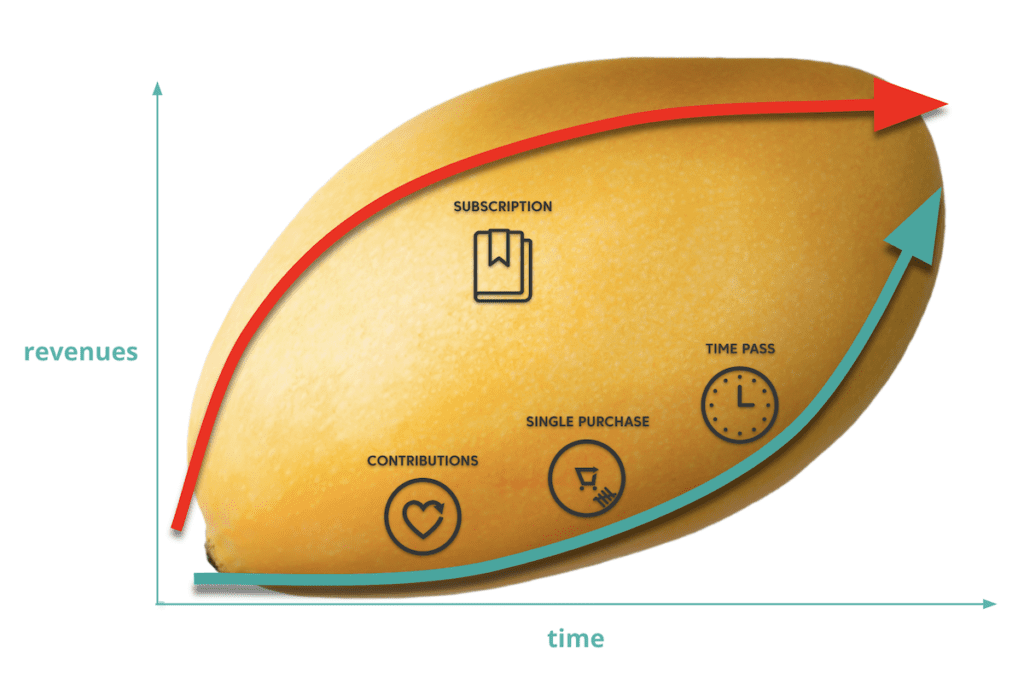|
Getting your Trinity Audio player ready...
|
OPINION
In his recent editorial for Columbia Journalism Review, Scroll CEO Tony Haile – whom I like and consider to be one of the brightest minds in entrepreneurial publishing – states that publishers are operating in a “one slot world,” where consumers are unlikely to hold more than one news subscription. He bases this on the Oxford’s Reuters Institute for the Study of Journalism’s 2019 and 2020 studies, together with internal data from Google.
In the face of publications like the New York Times – and indeed publishers of any size – seeking to be “the one,” Tony’s solution is for publishers to band together in order to be able to compete. Now, this strategy does, of course, play to Scroll’s business model – and I have absolutely no problem with that – but do I believe that his reaction to the Reuter’s Institute’s findings is dead wrong. It’s a classic example of zero-sum publishing, which I have written about before.

With the zero-sum publishing model, if a reader is only going to pay for a subscription to their favorite news publication, then precisely zero revenue will be available for anyone else.
If all they are offering are subscriptions, then Publication A gets everything, and Publications B through Z get nothing at all. Put another way, it means that every publisher is vying with every other publisher out there to capture each user’s revenue. For one publication to win, everyone else has to lose.

Tony recognizes this, of course, and he targets his article at smaller publishers because he believes the NYT has such strength in its journalism, reporting and variety of content, that no one else can compete with them.
And you can understand why he targets those publications – one can easily imagine a scenario where smaller publishers increasingly lose out of any market share when attempting to compete against the mainstream media. This in turn reduces the variety and quality of reporting available to audiences around the world.
Great! So far, we’re both in agreement. It’s his solution that I’m having difficulty with.
Tony argues that publishers should band together and put their content behind one shared paywall (presumably Scroll’s) in order to be able to compete with a mainstream publication. In his own words: “A coalition of smaller players can work together to offset the singular strength of the dominant player.”
Can someone explain to me how this is anything other than completely embracing zero-sum publishing? Yes, there are more publications in Haile’s coalition, but his goal is still for them to take the one subscription away from the NYT. It’s a continuation of “For me to win, everyone else has to lose.”
Rather than getting locked into a battle for sole ownership of readers, publishers should instead provide different ways for people to contribute to multiple publications each month. This, by the way, also reflects the way readers consume content – by visiting a myriad of sources every day. Rather than rely solely on subscriptions, the revenues of which just go to one outlet, the industry should embrace alternative, low-friction models, such as the ability to purchase individual articles or memberships, offering timed access to content, or encouraging readers to make voluntary contributions.
If publishers expanded their monetization options, the Reuter’s Institute’s findings would no longer be so scary. Yes, the NYT might dominate the subscription landscape (though, I expect, only by continuing to offer discounts and offers) but readers could continue to enjoy all the content they like across the web. And publishers or all sizes would generate revenue.
It’s true that low-friction models are slower to generating revenue than subscriptions – because they’re not a hefty lump sum – but they build over time, they do not cannibalize existing monetization streams, and they continue to engage new customers – in particular those audiences who might never have considered a full subscription. As a result, they build an additional revenue stream that, once it ramps up, keeps on coming. And they keep users happy and engaged – which is the core of user-centric models anyway.

Now, just as Tony’s original article ties into Scroll’s area of business, what I am proposing does naturally favor Laterpay’s model. But I truly believe that the democratization of media spend will prove more sustainable and will also help expand revenues in the future.
The key is to give people the freedom to subscribe to one publication but make payments to many – consuming content the way they want to, rather than being forced to choose just one publication.
Cosmin Ene
Founder and CEO, LaterPay
LaterPay’s “use now, pay later” approach empowers publishers to monetize the vast space that lives between ads and subscriptions and turn users into paying customers. Its patented technology enables micropayments without upfront registration, creating a running tab through which users can consume paid digital content and services with one or two clicks – a frictionless experience that turns traffic into transactions.



